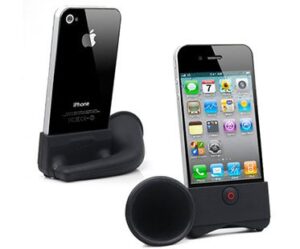

The following videos provide a thoughtful review of the guitar amp, cabinet, pedal and mic modeling app AmpKit from Agile Partners, plus the AmpKit LiNK hardware from Peavey Electronics that lets you plug your guitar or bass into an iPhone or iPad.
#Ampkit iphone 5 software#
you can buy those all separately from within the app, tho so I would start with the free version and see what you really need or want from there).Ĭheck out the website links above to check out some demo videos and screenshots.No doubt you are totally aware of the iRig and Amplitude combination from IK Mulitmedia, but you may not be aware that there are a number of alternative options out there both for the hardware to connect to your iOS device, and for the software you can run on it.
#Ampkit iphone 5 full#
PocketAmp will run you $2.99 for the univerasal app (which gives it to you on both your iPhone and iPad if you desire).ĪmpKit will run you $19.99 for the full featured version or FREE for the lite version (the only difference is the amount of pre-loaded amps, effects, etc. If you want to use a score reading app on your iPad and use your phone to play along with? You could go either way.
If you will be practicing to actual music from your collection, than I would go with PocketAmp. If it’s just for playing, possibly recording, tuning and practicing to a metronome with a decent sounding app through your phone then I’d probably go with AmpKit. Either app will do you right in the end so it boils down to what you really want to use it for. There are far more controls and things to navigate with that software and Peavey would serve us well to let us run it on our iPad in full resolution. I do wish that AmpKit was a universal app. However, there really isn’t that much to navigate with PocketAmp, so the big screen doesn’t really add all that much. Both will, of course run on the iPad but PocketAmp is a universal app while AmpKit will only run in the small iPhone sized window. And, once loaded, you can only play and stop! This is a monstrous draw-back for me as I would primarily use the software to shed new tunes on the road and to have to start a song over to try and get that one bridge section again would drive me insane. AmpKit forces you to pre-load your tracks one-by-one via your computer over WiFi. PocketAmp gives you access to your ENTIRE iPod library and offers the ability to fast forward, rewind and pause. While both offer the ability to play along to tracks of your choosing, PocketAmp REALLY got this one right. Where I think Pocket Lab Works “PocketAmp” takes the lead: Granted, guitarists may have a different experience. The Pocketamp was a bit noisy and thin sounding for my bass. Especially when using the EQ effect pedal with 10-band EQ, I was able to dial in a noise-free and totally acceptable sound easily. Personally, I also think that Peavey Ampkit sounds better. In addition to amp modeling you get a tuner, metronome, the ability to record yourself playing and the ability to string MULTIPLE effects together.

Where I think Peavey’s “Ampkit” takes the lead:Īmpkit does offer a bit more for your money (especially if you use the FREE version which, for me is completely adequate). I experienced no latency with either app (running on my iPhone 3GS and/or iPad 3G). If you’re looking for live implementation, while, yes, it’s possible, I don’t think you’d be happier than with the real thing.

NONE of the given effects are going to replace that pedal board on stage. Both offer a range of effects, but keep in mind. It is even recommended on the PocketAmp website, actually. Since, for the most part, these two apps do the same thing so I’ll simply break down the differences between them.īoth require a cable of one sort or another to work and the AmpKit AmpLink works incredibly well. I can say that I enjoyed both very much, but there are some definite pros and cons involved with each so, if you have yet to purchase an app like this for your iPhone, hopefully this will help you decide between two of the star players in the arena!īoth apps offer an array of sounds and effects and both allow you to play along to tracks of your choosing. I also happened to be invited to test out PocketAmp as well, so I thought I’d follow up with a comparison of the two. Some were praising the software and some said, “what about Pocketamp?”. So I’ve gotten quite a few messages since posting my review of Peavey’s Ampkit software for iPhone.


 0 kommentar(er)
0 kommentar(er)
